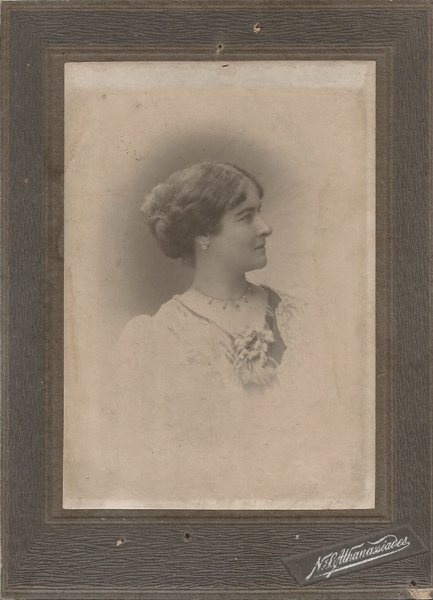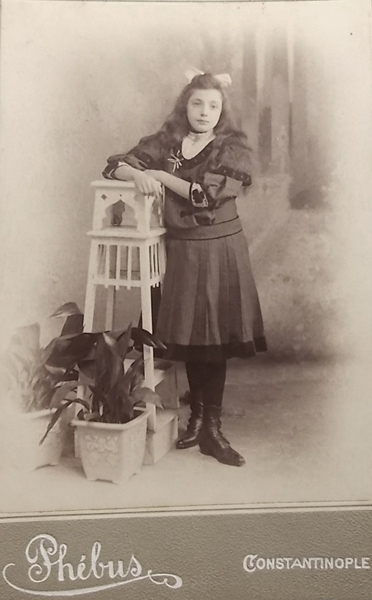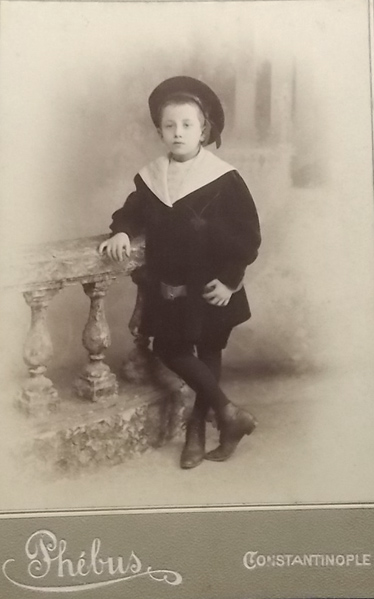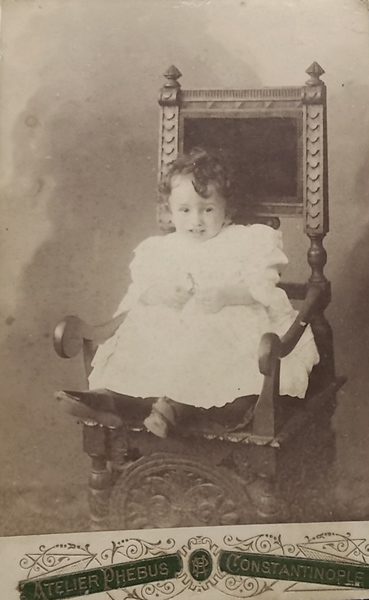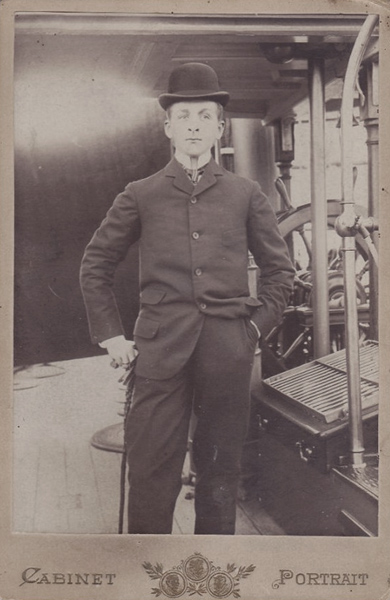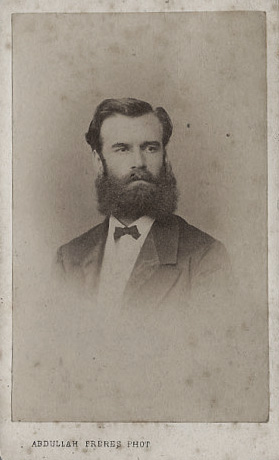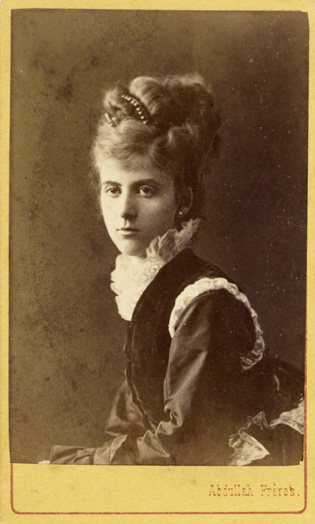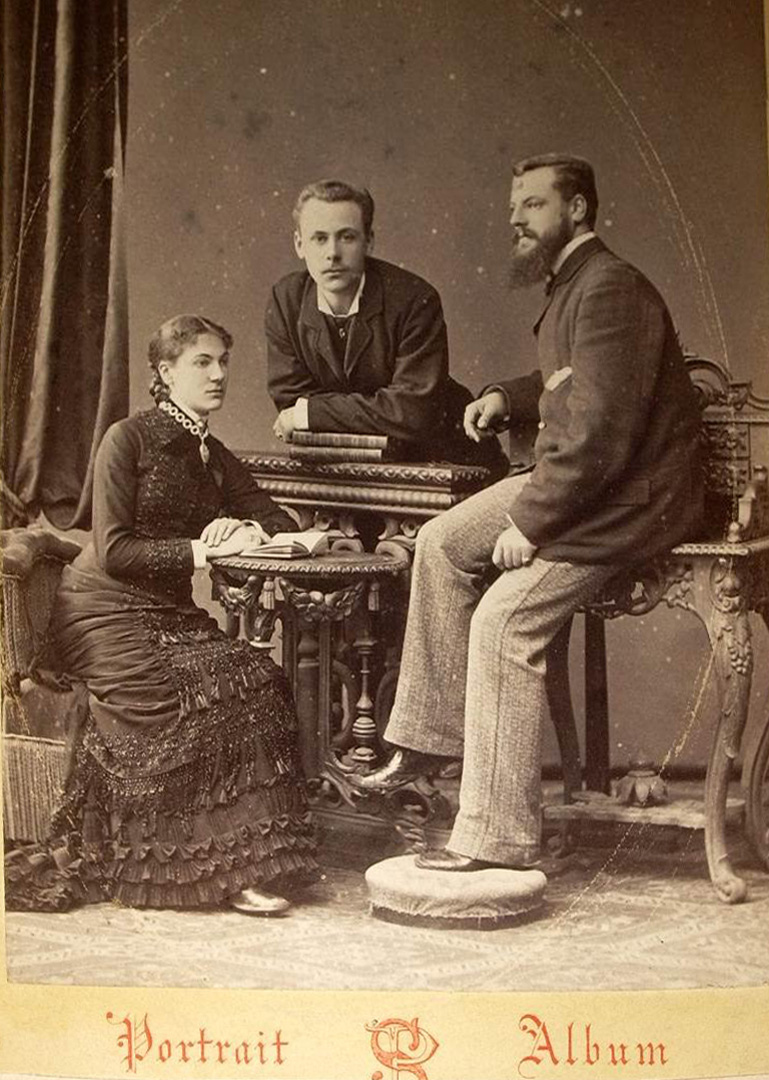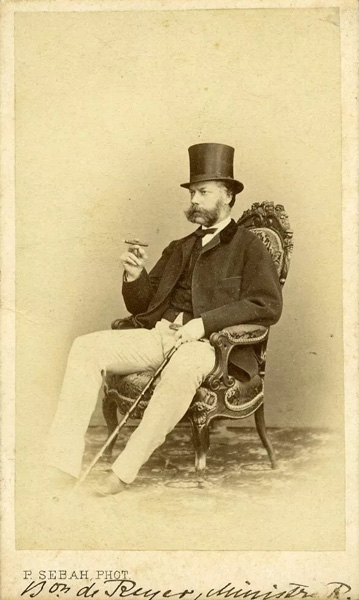
Ephemera
Cabinet photos
The cabinet card was a style of photograph which was widely used for photographic portraiture after 1870. It consisted of a thin photograph mounted on a card typically measuring 108 by 165 mm. In earlier times only the wealthiest could afford portrait painters to commission to visualise themselves and their families for future generations and while photography was still not cheap and not in the realm of a casual amateur it did bring that image capture to the rising middle classes across the world including the Levant. The carte de visite was displaced by the larger cabinet card in the 1880s. Both were most often albumen prints, the primary difference being the cabinet card was larger and usually included extensive logos and information on the reverse side of the card to advertise the photographer’s services. However, later into its popularity, other types of papers began to replace the albumen process. The cabinet card was large enough to be easily viewed from across the room when typically displayed on a cabinet, which is probably why they became known as such in the vernacular. Photographers began employing artists to retouch photographs by altering the negative before making the print to hide facial defects revealed by the new format. Small stands and photograph frames for the tabletop replaced the heavy photograph album. For nearly three decades after the 1860s, the commercial portraiture industry was dominated by the carte de visite and cabinet card formats. Owing in part to the immense popularity of the affordable Kodak Box Brownie camera, first introduced in 1900, the public increasingly began taking their own photographs, and thus the popularity of the cabinet card declined, though in the Levant this process was probably less pronounced as is shown by the great number photographers from diverse nations operating till the 1920s.
Namings and writings on the back were done occasionally, usually when a photo was then given to a friend or relative for their reference or by subsequent generations to record a memory about to be lost. More often photos and their identities were never noted and today they mostly are purely decorative objects, sometimes even when still retained by the same family. This gallery concentrates on the very few who have been noted down so faces have names and therefore relevance in the overall Levant families story.
Adèle Lorino, photo taken in Smyrna pre 1922. The Lavino were Dutch merchants descendant of Edouard Lavino - son of George - born in Rotterdam ca 1814. He registered with his wife, Julia Borrell, and his sons at the Dutch Consulate in Smyrna in 1859 (see the document coming from the Archives in Den Hagen).
Ms Ida de Haas of Smyrna 1902, possibly from the city’s Dutch Levantine community. A Rubellin photo.
The young girl is Joséphine Jeanne Azizée Rose Olympe Potton born in Smyrna 31.8.1897 - daughter of Albert Potton (° LYON 1855 + 1921) merchant & Vice Consul of France in Antioch (Antakya).
Her mother was Berthe Justine Dorsharmet (°1865 Smyrna + 1927) daughter of Jean Dorsharmet (1811 Trieste + 1884) merchant and Consul of Portugal in Smyrna. The photo was taken on the Rue des Roses, the street in which the Dosharmet family had their residence. According to the descendant Marie Voisin, the death date is incorrectly marked; Jeanne died in Lyon in 1956 aged 59 - analysis and information courtesy of Marie Anne Marandet & descendant Marie Voisin 2013.
Mathilde Castelli was born d’Andria (1841-1920) wife of Nicola Castelli (1828-1879) mother of Jacques (Giacomo) Castelli (b. 1866). Mathilde was the daughter of Ignazio d’Andria & Maria Marcopoli. Ignazio is well known as the founder of the ‘Ignazio d’Andria shipping company’. He owned many ships. The family settled in Constantinople. The descendants owned many buildings in the ‘Passage d’Andria’ which was located near the Grand Hotel de Londres which they also owned.
Florence Marengo, photo taken in Constantinople pre 1923. The Marengo / Marango family were one of the Catholic families from the Island of Syros.
Priest Michele Glasnovic.
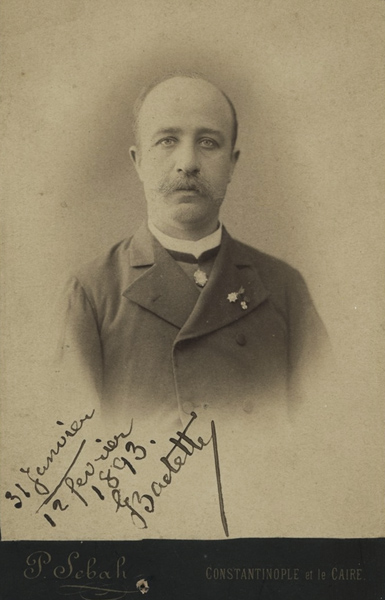
Godefroy Barthélémy Emmanuel Badetti, Vice-Consul of Britain and Sweden and Norway in Edirne / Adrianople, dated 1893.
Pauline Olivier, photo taken in Smyrna. Pauline Olivier née Fabre was born in Constantinople on 10.1.1873 daughter of Etienne Fabre and Evanthia Kappa. She married Ernest Olivier - a French merchant and shipowner - in Smyrna (St Polycarpe) on 18.5.1892. She died in London in 1953.
Yvonne de Testa (1896-1919, daughter of Fortuné Testa & Maria Marengo – the Testa were an important dragoman family resident in the Levant for generations), photos taken in Constantinople.
Theodore de Testa (1900-1972), younger brother of Yvonne. More information on this individual:
Theodore de Testa (1900-1972), in a younger state.
What appears to be a young Stan Laurel (1890-1965) of the famous comedy duo photographed aboard a ship presumably in the bay of Smyrna considering the photographer’s stamp on the rear, presumably kept for himself as a keep sake?
Fortunée Savalan, the first name clearly showing the cultural influence of the French language on the Armenian minority of Smyrna of the time.
James Hadkinson, member of an important Anglo-Levantine family based mostly in Smyrna engaged in trade of olive oil, soap manufacture etc.
Sophie Psalty photographed in Constantinople.
Nowill family members named in the photograph, an important Anglo-Levantine family resident in the Constantinople. Sidney John Payne Nowill (1894-1956 - in the centre of the photograph, perhaps with his parents) was married to Sybil Olive La Fontaine and their son Sidney Edward Payn Nowill (1921-2015 - obituary) is the author of the autobiographical book ‘Constantinople and Istanbul: 72 Years of Life in Turkey’, published 2011.
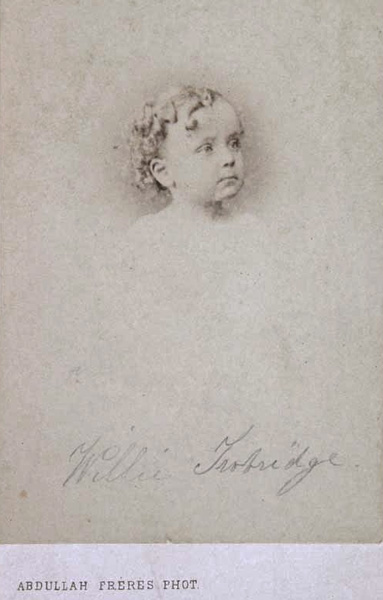
Willie Torbridge photographed in Constantinople.
Baron de Reyer, possibly the Austro-Hungarian ambassador in Constantinople.
The wife of Edward Watts photographed in Constantinople.


